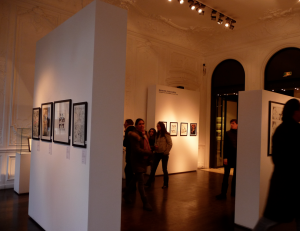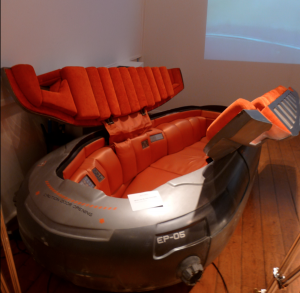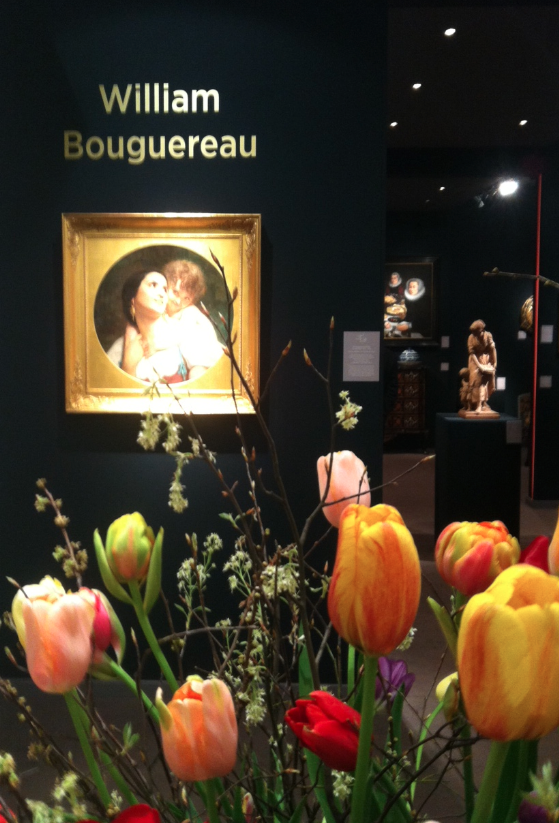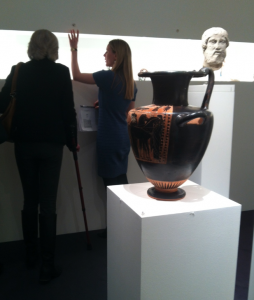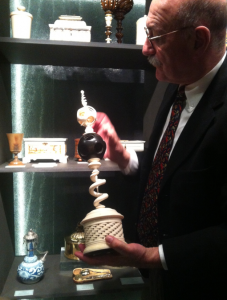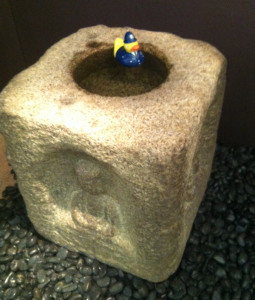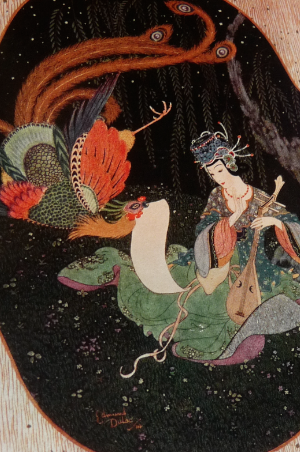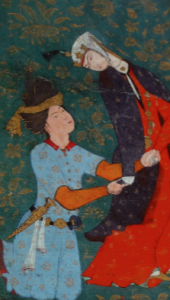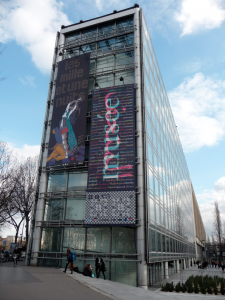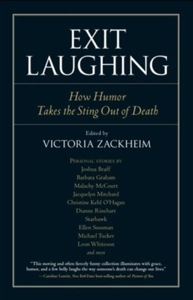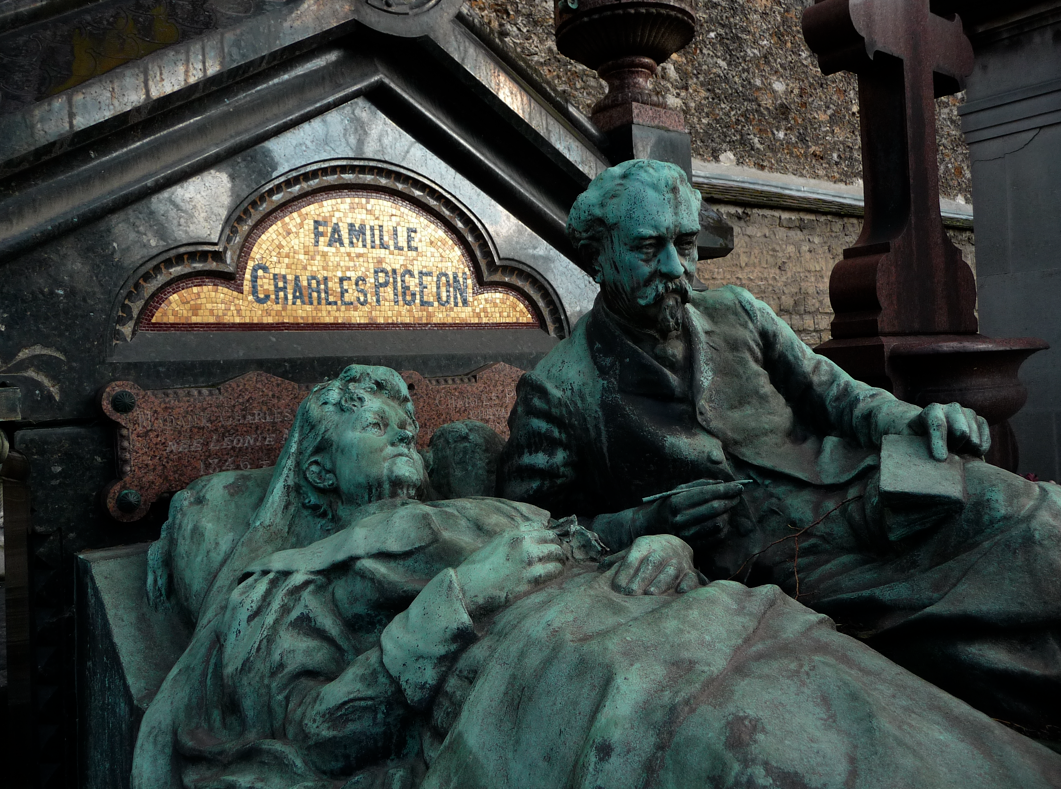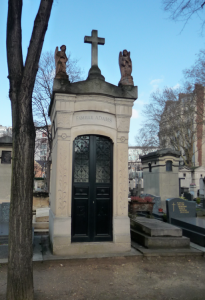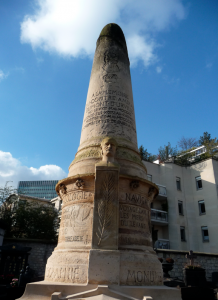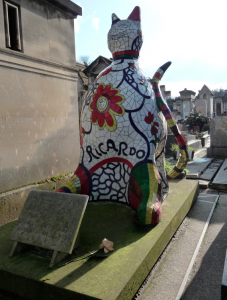
SO we were at the fair to see art, us and 69,998 other aficionados who had crossed countries and oceans to attend. The big news of the fair was that less Chinese are buying this year, the void quickly being filled by American museums which seem to have grown confident of their finances after a bearish hibernation the past few years. And that TEFAF is all set to organize a second fair; in China! But about the art….
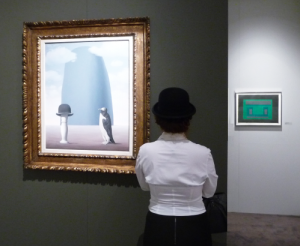
Magritte and Me!!!
What I saw, what really blew me away were the Narwhal horns, which, being the left tooth of the arctic whale technically belong in a Natural History exhibition, but being from the 17th and 18th century, they qualified as antiques. Antiques I was invited to touch! That is one of the most flabbergasting aspects of this show. The dealers are happy to talk about their treasures and will occasionally invite you to touch and even try on things as rare and improbable as a Narwhal horn, a tiara, an impressionist painting and ancient Roman pottery.
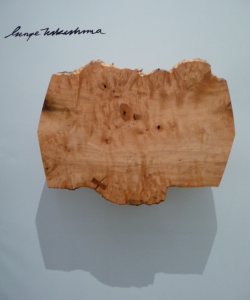
A coffee table or work of art?
There were several stands with Illuminated books, rare manuscripts that were painstakingly calligraphed, then painted and gilded on parchment by solitary monks living in light deprived, freezing cold abbeys across Europe. Centuries later, the blues were still brilliant, the golds bright and they could be yours for anything from 240,000 to 3,000,000€.
As I walked through the fair, I priced things, which was a great way to strike up conversations with the dealers and to learn the market values of entire genres. By the second day I was humming the Barenaked Ladies song, “If I Had a Million Dollars” and virtually spending the money I don’t have. The thing with TEFAF is that someone with a million dollars could leave with a trunk full of loot and feel very rich indeed, or they could twist in angst over all thy multi-million dollar pieces that were out of reach.
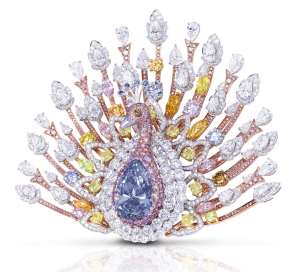 There was an entire section dedicated to fine jewels, with Graff displaying the most famous stones of the show; an incredibly rare 20.02 carat blue diamond set with another 100 carats of diamonds in all different shades to form a $100 million peacock that would fit into the palm of your hand. I didn’t get too close to that piece, but I did approach a pair of diamond earrings that had once belonged to a royal princess, a pendant of an enameled lamb sitting on a golden bed that was created in the 1500’s and some gorgeous Indian with rock crystal stones set into enameled 22k gold fish shaped earring.
There was an entire section dedicated to fine jewels, with Graff displaying the most famous stones of the show; an incredibly rare 20.02 carat blue diamond set with another 100 carats of diamonds in all different shades to form a $100 million peacock that would fit into the palm of your hand. I didn’t get too close to that piece, but I did approach a pair of diamond earrings that had once belonged to a royal princess, a pendant of an enameled lamb sitting on a golden bed that was created in the 1500’s and some gorgeous Indian with rock crystal stones set into enameled 22k gold fish shaped earring.
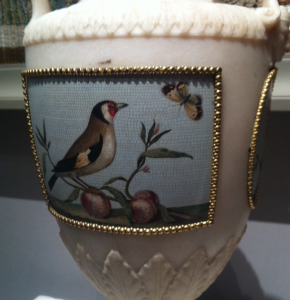
We never even knew micro-mosaics as an art form!!!!
In the works on paper area we saw some color-rich Japanese prints (Hiroshige 4,500€) and several studies by Klimt (220,000€). There were also quite a few pieces by Picasso, who could also be found in the Paintings area and the Modern Art section, in Gagosian’s stand, not far from the Koons. There were several mobiles by Calder (1.7M€) and a healthy amount of pieces by Fernand Leger and Joan Miro. The collections were conservative, making this one of the few art fairs where I didn’t wander around the booths snorting, “Hunh, and they call this art?” although Damien Hirst still leaves me cold.
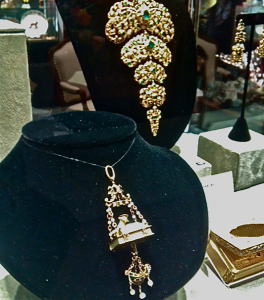
from the 1500's!!!
You tired by all this amazing wealth? I was too, by the time we’d spent one day and seen only 3/5 of the show! We went home exhausted that evening, thrilled to have reservations in the hotel’s restaurant and determined to return the next day, as planned.
We had yet to explore the simply balanced Japanese ceramics (7,000€), nor the astonishingly ancient 3000 year old buddah (65,000€) or the heart-stoppingly pure Egyptian cat (75,000€). There was a blue hippo from Egypt that looked liked he’d sauntered off a poster for the Met, and gold earrings from ancient Rome that were actually quite wearable, though I’d be terrified of loosing one on the metro tracks.
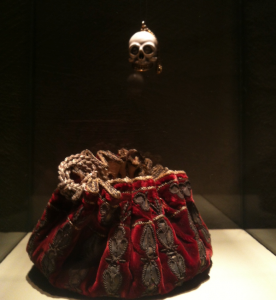 Then we made our way to the Paintings, instantly falling for a gorgeous Caillebotte (2.4€ million) of a tree in a meadow that had been inspired by a Monet the artist owned. There were fantastic Dutch still lifes of butterflies (40,000€) by an artist I’d never heard of before, but plenty of work by names you’d recognize, like Boldoni, Cassat, Brueghel, Delacroix, Velazquez and Van Dyck.
Then we made our way to the Paintings, instantly falling for a gorgeous Caillebotte (2.4€ million) of a tree in a meadow that had been inspired by a Monet the artist owned. There were fantastic Dutch still lifes of butterflies (40,000€) by an artist I’d never heard of before, but plenty of work by names you’d recognize, like Boldoni, Cassat, Brueghel, Delacroix, Velazquez and Van Dyck.
After two days, even Mr French was feeling saturated, and loaded down. He was packing some serious weight on him because the galleries, which had been selling their personal catalogues for about 10€ a stand, suddenly went into panic at the thought of shipping all their tomes back and were handing them out as free gifts that we couldn’t refuse, happy to drive home with fodder to dream on.
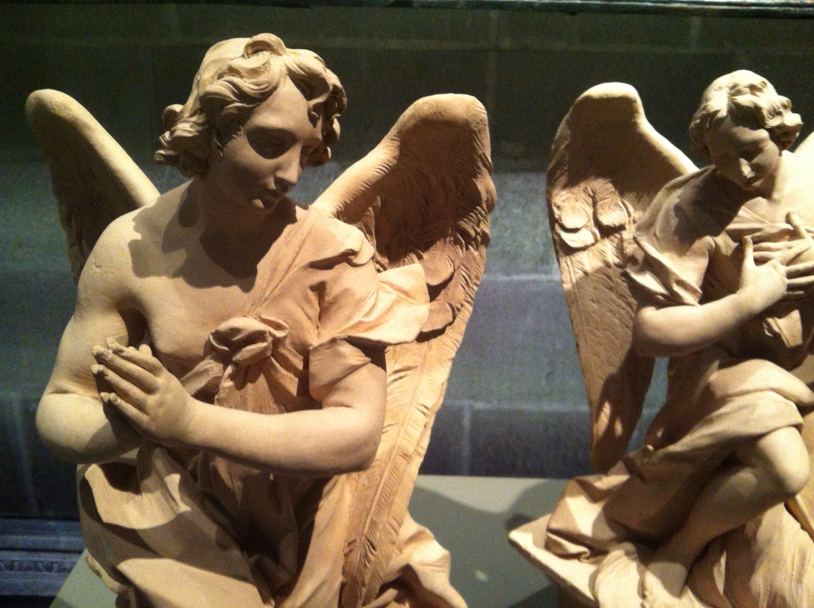



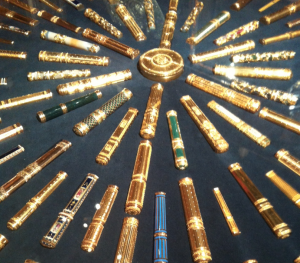
- Rather old sealing wax boxes and,
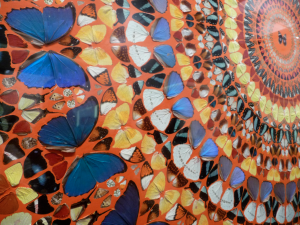
...rather new Damien Hirst
 There are some truly stunning pieces in the Maillol exhibition, cups that look like lace, bowls with an opalescent glow. You start to wonder how they survived through out the centuries. The stories they could tell. The work gradually gets more and more modern, ending with the mid-20th century. The colors become vibrantly rich, with bold shapes and touches of humour that having you leave the show in a good mood.
There are some truly stunning pieces in the Maillol exhibition, cups that look like lace, bowls with an opalescent glow. You start to wonder how they survived through out the centuries. The stories they could tell. The work gradually gets more and more modern, ending with the mid-20th century. The colors become vibrantly rich, with bold shapes and touches of humour that having you leave the show in a good mood.











